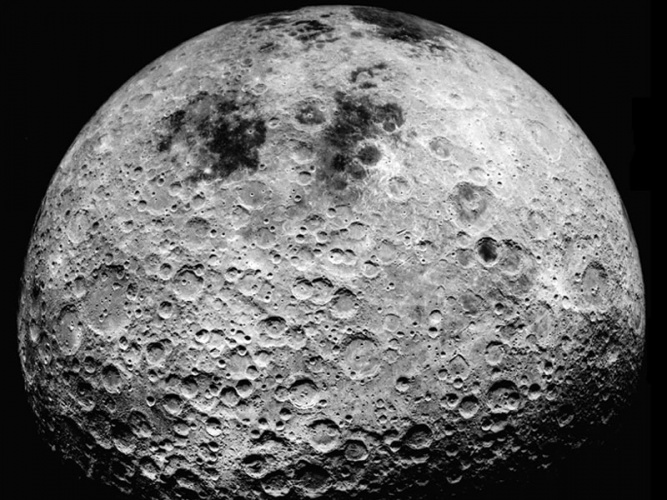
According to Chinese state media, Chang’e 4 landed in the Aitken basin at the Moon’s southern pole at around 02.30 GMT on Thursday morning, making it the first spacecraft to land on the body's far side. Due to tidal locking, the same side of the Moon is always facing Earth, with the far side – sometimes referred to as the dark side – permanently out of view. Consequently, much less is known about the far side, with the first photographs only taken in 1959 by the Russian space probe Luna 3.
Landing a craft on the far side has been hailed as a significant technical achievement for China’s space agency. To facilitate the touchdown and provide communications for the ensuing mission, a relay satellite called Queqiao was launched in May 2018 to the L2 Lagrange point beyond the Moon. This orbit allows Queqiao to communicate with both the lander and Earth. Despite this communication channel, the final moments of Chang’e 4’s descent could not be controlled remotely, with the spacecraft employing laser measurements and an onboard camera to land autonomously using its rocket booster.
Approximately 10 hours later, Chang’e 4’s rover – known as Yutu 2 or Jade Rabbit 2 – emerged from the lander to begin its mission. The six-wheeled solar-powered vehicle has an official mission duration of only three months, but Chinese scientists have indicated they are hopeful it will be operational far beyond that. Together with Chang’e 4, the rover will provide information about the Moon’s geology. The Aitken basin is the biggest known impact structure in the solar system, believed to have been created by a 500 km-wide asteroid billions of years ago. Such was the force of the impact, material from the satellite’s mantle may have been brought to the surface, and this material could provide important clues to the Moon’s history.
The rover is equipped with a panoramic camera to scout locations of interest. It also has a Visible and Near-Infrared Imaging Spectrometer (VNIS) to study minerals in the crater’s floor. A Lunar Penetrating Radar (LPR) instrument will be able to look into the Moon’s shallow subsurface to a depth of about 100m. This will be used to probe the thickness of the lunar regolith and explore the structure of the upper lunar crust.
Beyond geological study, the Chang’e 4 mission will use a Low Frequency Spectrometer (LFS) to conduct radio observations that would not be possible from Earth. The far side of the Moon has long been thought an ideal place for experiments in low frequency observation, as it is shielded from the Earth’s electromagnetic interference. Meanwhile, the Lunar Lander Neutrons and Dosimetry (LND) experiment will examine the effects of lunar radiation in the context of future manned missions to the Moon. Chang’e 4 is also carrying a miniature greenhouse to observe how a selection of plants and vegetables – including potatoes – grow in a lunar environment.




Red Bull makes hydrogen fuel cell play with AVL
Formula 1 is an anachronistic anomaly where its only cutting edge is in engine development. The rules prohibit any real innovation and there would be...